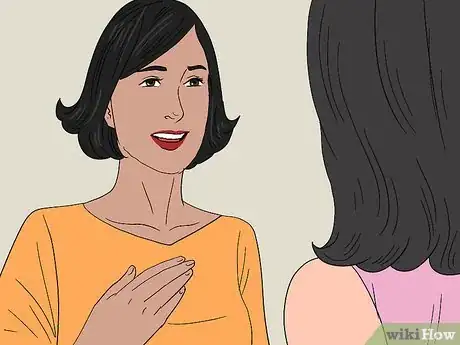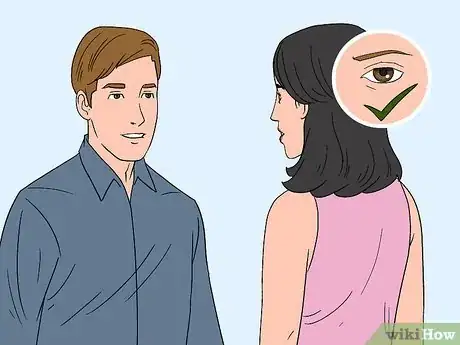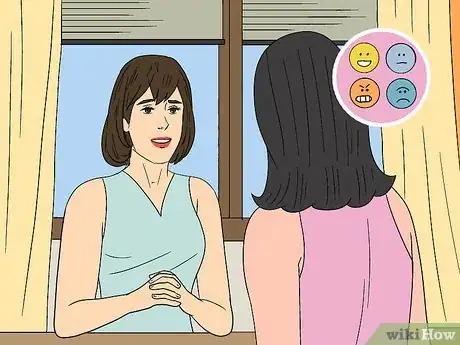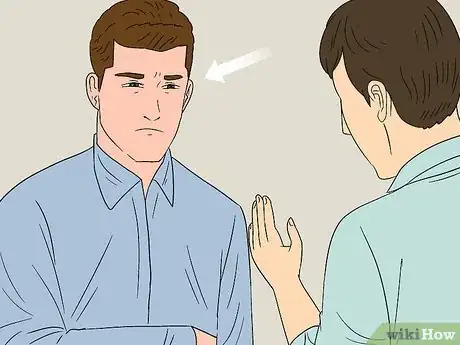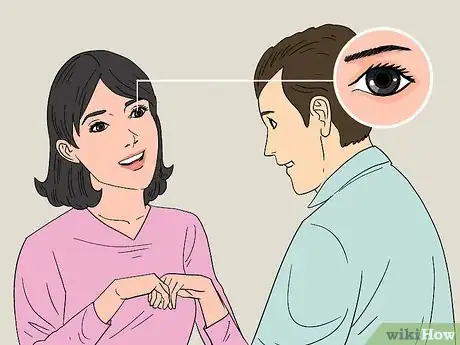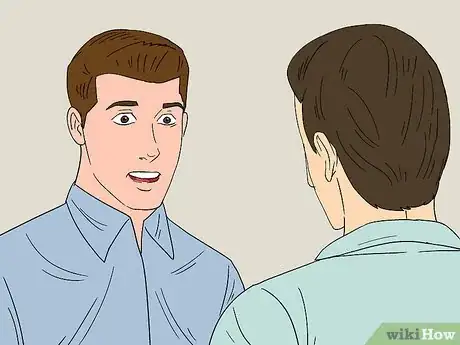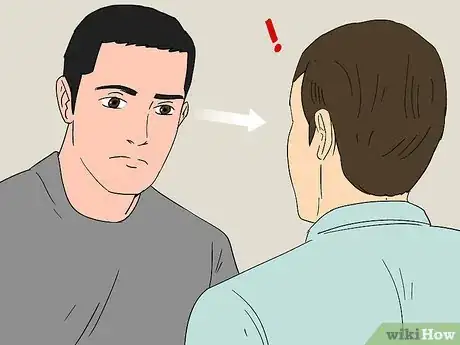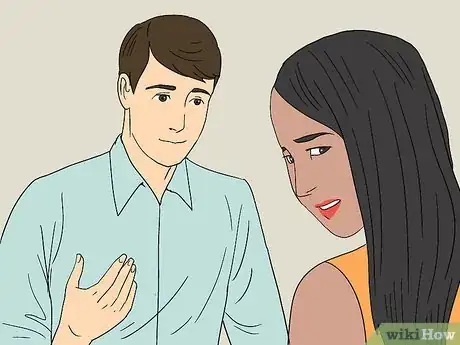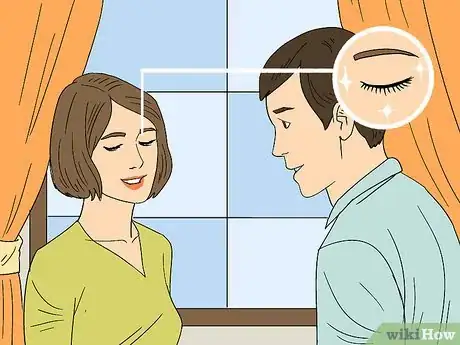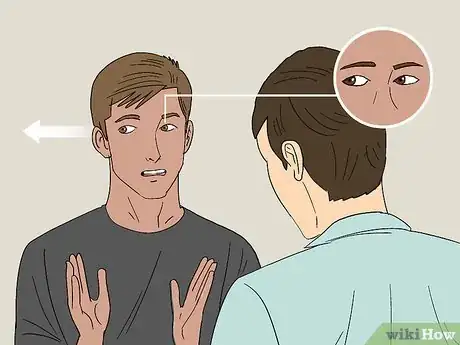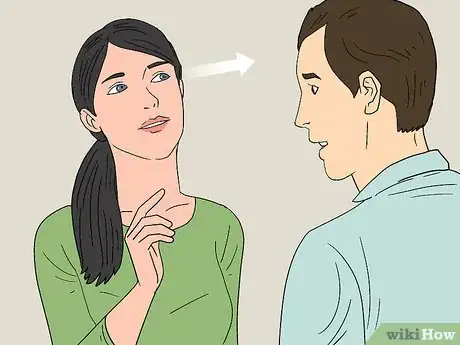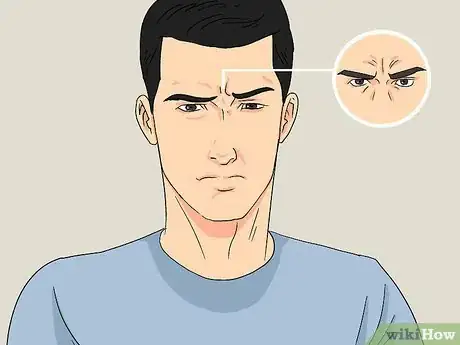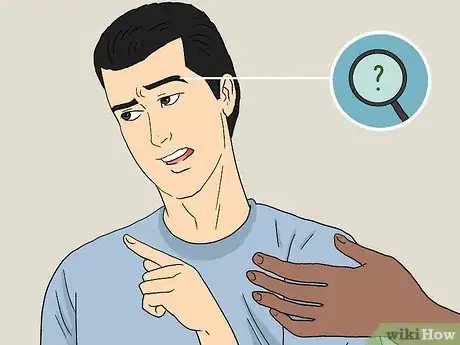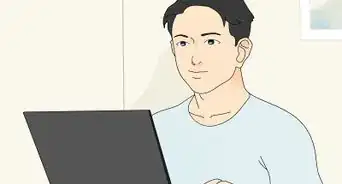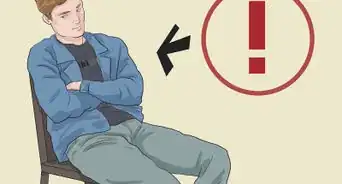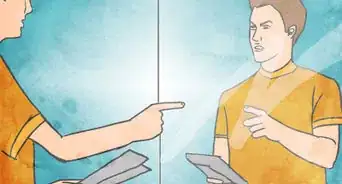This article was co-authored by wikiHow staff writer, Janice Tieperman. Janice is a professional and creative writer who has worked at wikiHow since 2019. With both a B.A. and M.A. in English from East Stroudsburg University, she has a passion for writing a wide variety of content for anyone and everyone. In her free time, you can find her working on a new crochet pattern, listening to true crime podcasts, or tackling a new creative writing project.
There are 10 references cited in this article, which can be found at the bottom of the page.
This article has been viewed 22,435 times.
Learn more...
They say the eyes are the window to the soul, but do eyes really communicate what a person is thinking and feeling? While it’s impossible to read another person’s thoughts, you can definitely gain emotional insight by learning to ready their eyes for different emotions. In this article, we'll tell you all about which subtle eye movements to watch for and what they mean. Keep reading for an in-depth look into this fascinating topic!
Steps
Understanding Basic Behavior and Standard Emotions
-
1Memorize a person’s typical facial expressions. If you’re speaking with a friend, family member, or acquaintance, try picturing that person’s standard facial expression. Does this person naturally narrow their eyes in conversation, or do they stay calm and relaxed? If you don’t understand a person’s natural verbal and facial tics, you might end up misreading their emotions later on.[1]
- Consider a person's temperament before rushing to any judgment on their emotions. If a friend or family member is naturally critical and pessimistic, they might narrow their eyes a lot more often.
-
2Identify microexpressions to understand a person’s mood. Pay attention to how another person reacts to different statements. As the conversation goes on, look for tiny changes in the person’s expression, whether it’s a twitching eyebrow or an extra blink. You can get a decent read on another person’s emotions by better understanding these tics and cues.[2]
Did you know? In total, there are billions of possible reactions and facial movements that humans can create.[3]
Advertisement -
3Recognize obvious displays of emotion in others. While it’s impossible to memorize every facial expression in existence, you can start taking note of more obvious emotions, like happiness, sadness, anger, fear, and disgust. Remember that happiness makes your eyes tighten and causes the surrounding skin to wrinkle, while anger draws your eyebrows inward. Additionally, note the differences between varying emotions like disgust and surprise.[4]
- The ability to understand and discern basic facial expressions can give you a leg up in future conversations.
- Take note of which expressions are closed off and which expressions are more open. While surprise and fear create a more open expression, emotions like contempt, anger, and sadness are much more closed off.
Monitoring Changes in Eye Contact
-
1Associate suspicion with narrowed eyes. Pay attention to the width of a person’s eyes throughout a conversation. Is the gaze normal, open, and receptive, or are their eyes narrowed and constrained? Think about the current situation, and try to determine the cause of this person’s suspicion and negativity.[5]
- Keep in mind that squinting can also mean that they have poor vision, it's too bright out, or they might have something in their eyes.
- In the middle of a conversation, take a mental inventory to figure out how your actions are being perceived. Are your own words and body language inspiring suspicion and negativity in another person?
-
2Identify arousal when someone’s pupils are dilated. Without being obvious, take a glance at another person’s eyes to see if their pupils are widening, or dilating. If their pupils look wider than normal, try to determine the reason. Are you both participating in a romantic, flirty conversation, or are you discussing something fearful or eerie? Try to narrow down the topic to figure out why this person is becoming aroused.[6]
- While commonly associated with romance, arousal can refer to a lot of different emotions. If you witness or hear about something disturbing, your pupils might dilate due to a fear-based arousal. It all depends on the situation!
-
3Note that widened eyes indicate shock at new info. Closely watch another person to see how they react and take in information. While some people are naturally more expressive than others, you can learn a lot by noticing when someone widens their eyes, and considering why. Depending on the situation, a person could widen their eyes due to fear, pleasant shock, negative shock, and discomfort.[7]
- For instance, if you sneak up on your friend, they might widen their eyes due to a sudden feeling of fear. Their eyes might also widen from the joy and surprise of unexpectedly seeing you.
- If someone does or witnesses something mildly embarrassing in public, they might widen their eyes as an uncomfortable reaction.
-
4Know that constant eye contact can be an intimidation tactic. Keep track of how long someone meets your gaze throughout a conversation. While eye contact is a healthy and important aspect of any personal conversation, you might find your gaze drifting on occasion. If someone stares at you for an extended period of time, you can assume that they’re feeling some sort of contempt. Is there a particular why this person might by trying to make you scared or uncomfortable? Answering this question might give you better insight into that person’s emotions.[8]
- For instance, if a coworker asks you to cover their shift, they might stare at you to intimidate you into agreeing.
-
5Recognize that lack of eye contact may signal nervousness. If a person seems especially nervous or cagey, count how many times they break eye contact with you in the space of a minute. Do they refuse to look you in the eye when you’re discussing a sensitive or important topic? They may be very uncomfortable, and they could even be lying.
- For example, you could be talking to your friend about some missing money when you notice that they’re constantly looking away, or refusing to meet your gaze. While this doesn’t necessarily indicate guilt, it could mean that your friend has something to hide—or at the very least, that they’re nervous.
- However, this isn't always true; people from Eastern cultures and people with certain disabilities may prefer to avoid eye contact in everyday conversation.
-
6Note that lots of blinking can be a sign of attraction. While it’s pointless to count how many times someone blinks in a conversation, try to determine if the person is blinking more than they usually do. Consider the conversation at hand: is the person coming across as flirty, or making an effort to be closer with you? If so, they might inadvertently be blinking as a sign of their attraction.[9]
- Keep the individual in mind during the conversation. Excessive blinking could easily be caused by an allergy or an errant speck of dust, so just jump to any irrational conclusions.
-
7Recognize that people often look at things they're thinking about. If they're looking at you, they're probably focusing on you. If they're looking at their watch a lot, they may be concerned about running late. If they're glancing at the door, they may want to leave.
- Of course, this isn't a perfect indicator.
-
8Avoid ascribing meaning too quickly to vague cues. Trying to determine someone's intent can be difficult. Don't assume someone is lying or being rude based on a single cue. Keep in mind that everyone has their own quirks and backgrounds, and this may influence their behavior.
- The idea that looking to the right or left can tell you whether someone is lying has been debunked. There's no correlation between eye direction and lying.[10] [11]
- Eye contact isn't considered respectful in all cultures. Someone from a different culture may politely avoid looking at your eyes.
- People with disabilities such as ADHD and autism may have different body language. They might avoid eye contact and fidget as part of their natural body language. Autistic people may stare into space while listening intently; their eye direction doesn't always indicate their attention.[12] Avoid accusing them of lying or inattention when they're just neurodivergent.
Tip: If you don't understand someone's body language, it's okay to ask. For example, you could say "I notice you've been fidgeting a lot. Is something bothering you, or do you just have extra energy?"
Understanding Eyebrow Movement
-
1Identify an angry expression when the eyebrows are pulled down. Look at a person’s eyebrows when they react to a conversational topic. Do they seem relaxed, or are their brows turned downward? Pay attention to their facial muscles, as tightness around the brows and forehead can be a big indicator of anger.[13]
- Some people don’t display their emotions as obviously, so their eyebrows might not be a great way to read emotions.
-
2Recognize fear when the eyelids and brows are pulled up. Imagine the typical expression of a horror movie victim. While these cinematic reactions are usually exaggerated, you can use them as a baseline to determine fear in real life. Look for brows that are lifting and pulled together, and a mouth that’s stretched open.[14]
- From a biological standpoint, lifting your eyebrows and eyelids helps your eyes to take in more light. In dangerous situations, this can help a person to be more aware of their surroundings.
- Wide eyes are a common but accurate stereotype of a fearful expression.
-
3Look for distinct wrinkles in a happy expression. Watch for contracted muscles in the face when a person is expressing joy, gratitude, or laughter. Specifically, pay attention to the muscles around the eyes and brows. While they won’t be as tight as an angry expression, you can notice many facial muscles contracting as a smile develops.[15]
- Look for crows feet along the outer corner of the eye, just below the eyebrows.
-
4Search for uncontrolled eyebrow movement to identify deception. When asking for an honest opinion or answer, zero in on a person’s eyebrows. While gifted liars will have a lot of their body language under control, you can detect slight twitches other small movements from a lying person’s eyebrows.[16]
- A person’s eyebrows aren’t a foolproof way to assume or declare guilt. However, they can sometimes let you know if an individual is being deceptive.
References
- ↑ https://www.apa.org/science/about/psa/2011/05/facial-expressions
- ↑ https://www.apa.org/science/about/psa/2011/05/facial-expressions
- ↑ https://www.psychologicalscience.org/news/releases/we-read-emotions-based-on-how-the-eye-sees.html
- ↑ https://www.cbc.ca/natureofthings/features/the-seven-universal-emotions-we-wear-on-our-face
- ↑ https://www.psychologicalscience.org/news/releases/we-read-emotions-based-on-how-the-eye-sees.html
- ↑ https://www.scientificamerican.com/article/eye-opener-why-do-pupils-dialate/
- ↑ https://www.spring.org.uk/2017/05/how-to-read-someones-emotions-from-their-eyes.php
- ↑ https://www.psychologistworld.com/body-language/eyes
- ↑ https://www.psychologistworld.com/body-language/eyes
- ↑ https://www.livescience.com/34068-eye-movements-lying.html
- ↑ https://www.smithsonianmag.com/science-nature/myth-busted-looking-left-or-right-doesnt-indicate-if-youre-lying-1922058/
- ↑ https://misslunarose.home.blog/2020/04/07/eye-direction/
- ↑ https://www.cbc.ca/natureofthings/features/the-seven-universal-emotions-we-wear-on-our-face
- ↑ https://www.cbc.ca/natureofthings/features/the-seven-universal-emotions-we-wear-on-our-face
- ↑ https://www.cbc.ca/natureofthings/features/the-seven-universal-emotions-we-wear-on-our-face
- ↑ http://www.buffalo.edu/news/releases/2011/07/12715.html
